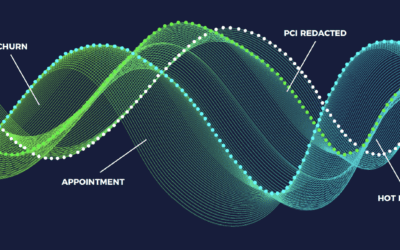“In English, please.”
How many times have you heard that line used in television or film and rolled your eyes? Maybe the starship’s engineer is describing engines or the crime scene investigator is explaining how fingerprints work. So, they have to simplify what they’re saying to get their point across. Maybe you’ve experienced similar situations. As an analyst, you work every day with raw data, trying to make sense of the figures so that coworkers can turn it into actionable information. But the vast majority of your coworkers and end users are not analysts. They don’t think in terms of metadata, database schemas, or ETL logic. This can cause a huge communication barrier between you as the analyst and the business end users.
Most companies resolve this by hiring experts who understand both the business side and the database side to combine the two. These experts ensure the language used in reports matches the language that the rest of the business is familiar with. But as time passes, companies are seeing that it is better to invest in self-service business intelligence (BI) tools, which speed up the time needed for analysis and empower enterprise users, ensuring we’re all speaking the same language.
Analyzing data manually the right way takes time
The value in your data lies in its ability to change the way your organization does business. Many companies collect and store data, but do not have the time or resources to analyze and make sense of it, so it goes unused. According to Forrester, businesses only leverage 40 percent of structured data, 31 percent of unstructured, and 27 percent of semistructured for business intelligence.
The main hindrance is the time it takes to analyze data manually. According to Computer Business Review, 72 percent of business and analytics leaders “are not satisfied with the amount of time it takes to get data analytic results.” By the time relevant data has been processed and turned into actionable information, it is too often late and obsolete.
That wasted data is the reason why enterprise companies are turning to self-service analytics software to harness valuable insights through the voice of the customer (VoC). And they’re doing this with speech analytics, like that provided by VoiceBase.
In the past, speech analytics has been limited to the contact center. With this concept of open architecture, cloud data warehouses, and BI tools, VoiceBase can power the valuable insights that you are capturing in your BI tool. We can assist analysts by dissecting calls and pulling keywords and topics for them to make the data more digestible and easier to build a custom BI dashboard to support their organizations’ needs. Once this call data is inputted, business end users can easily make sense of the data on their own in a self-service BI tool such as Tableau, increasing your contact center ROI.
Self-service BI tools empower enterprise users
Bad data costs US businesses an estimated $3.1 trillion every year. With BI tools in place, you can ensure a higher quality of data for your enterprise users, getting data into their hands without the delays and imprecise decisions that result from manually analyzing data. By using BI tools, you allow your customer-facing employees to be more productive and to recognize issues before they become problems and capitalize on opportunities as they arise, thereby keeping your customers happy and beating the competition. This makes it possible for those without extensive training in BI, data mining, or statistical analysis to work directly with captured data. In short, they do the translating on their own.


